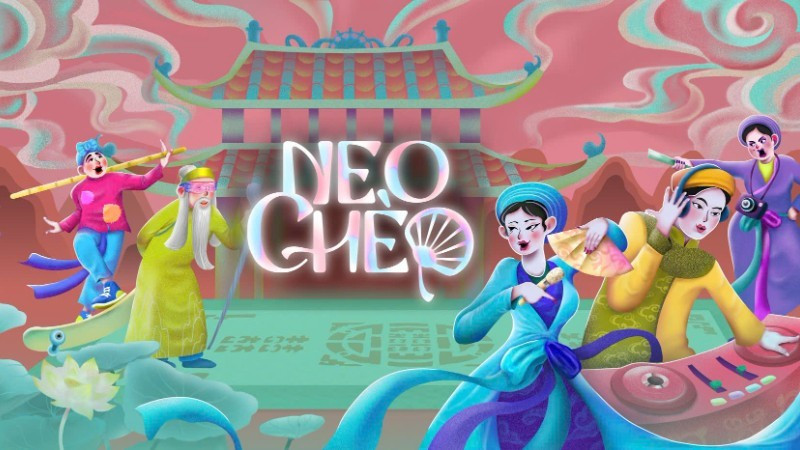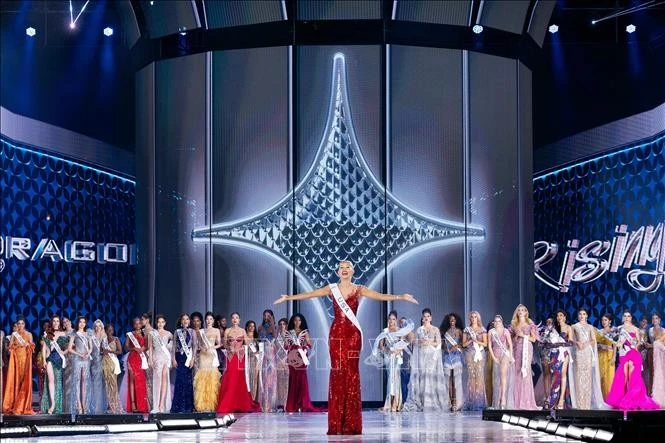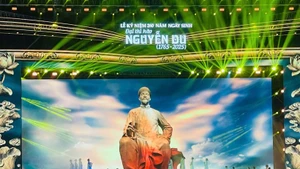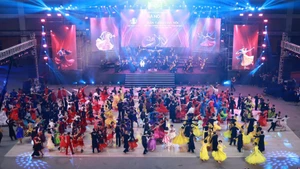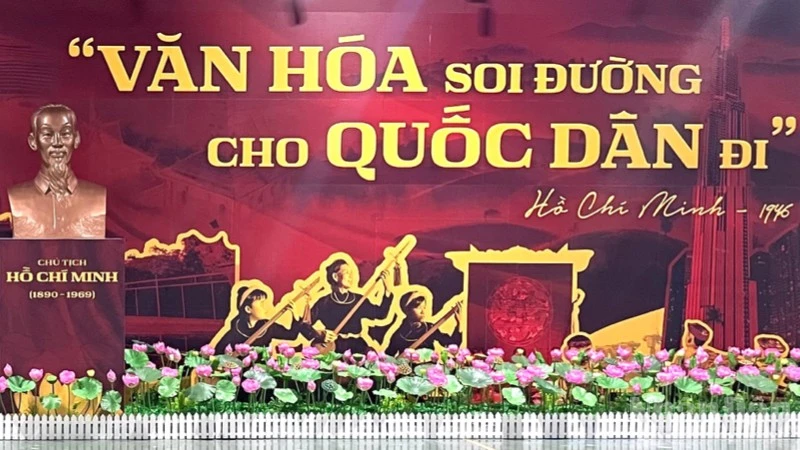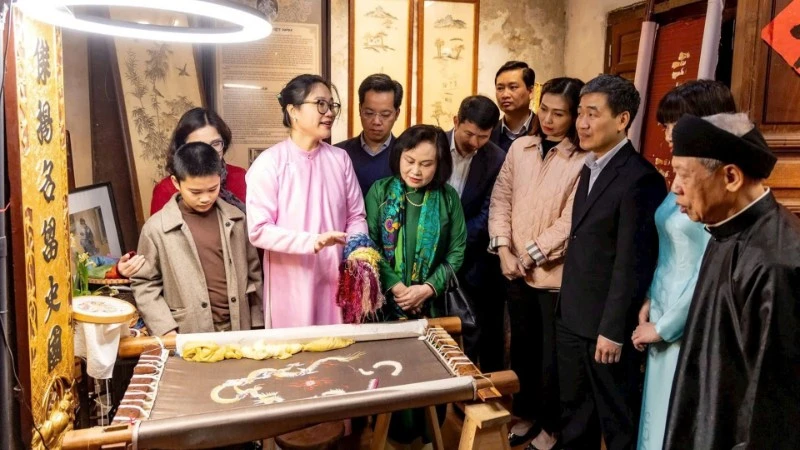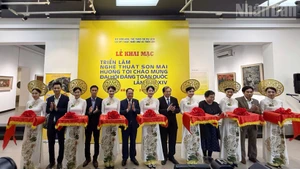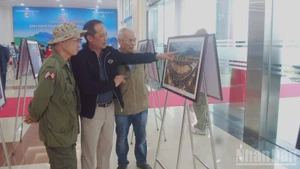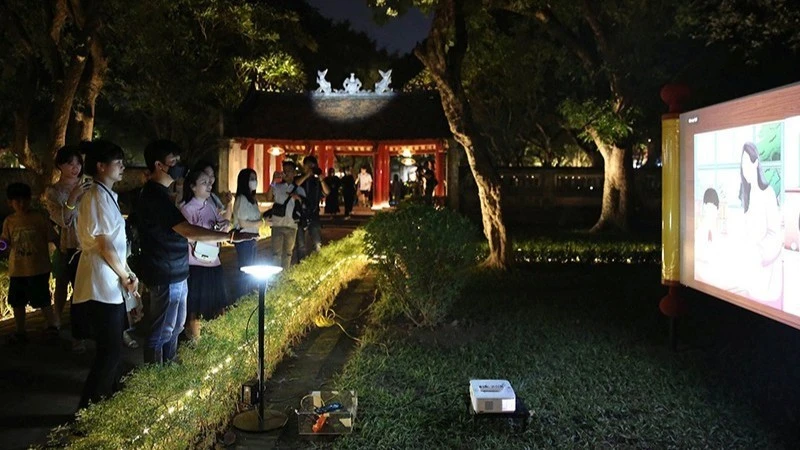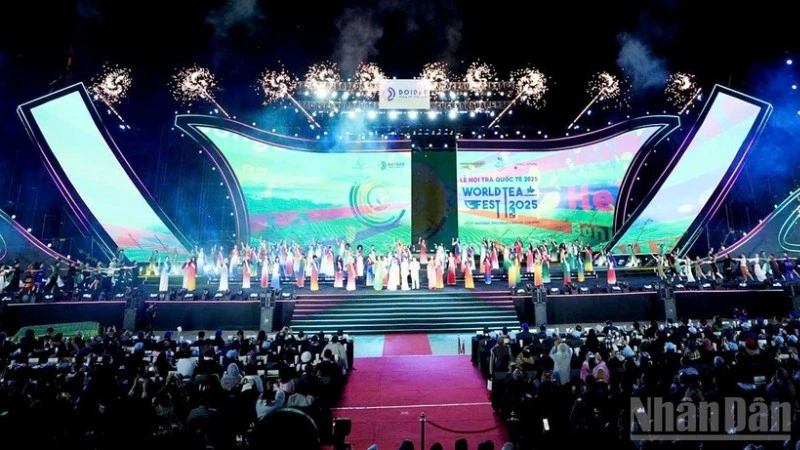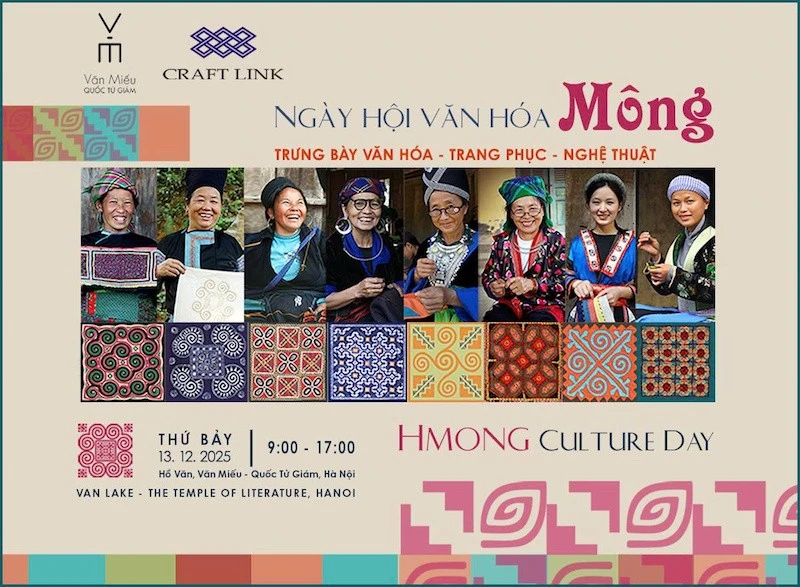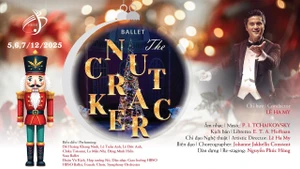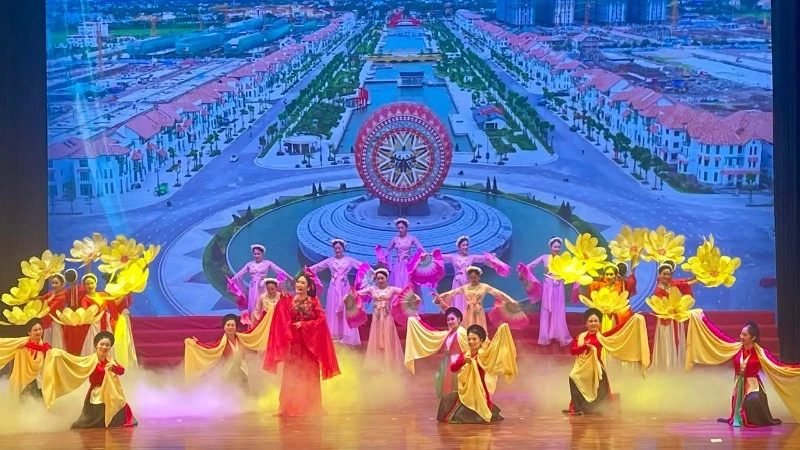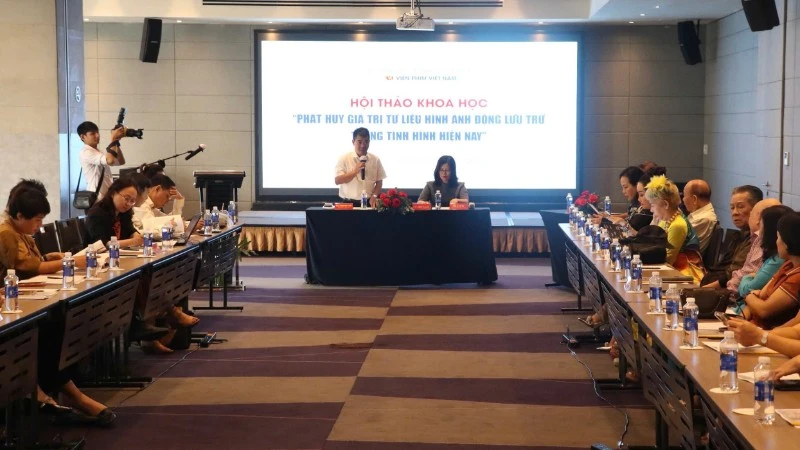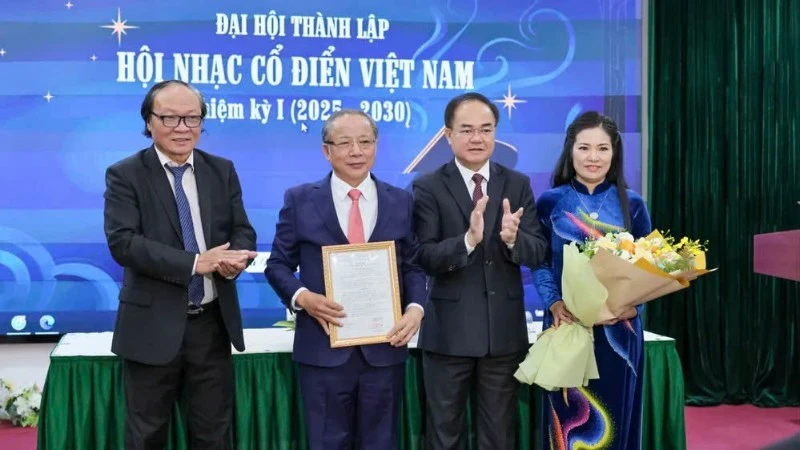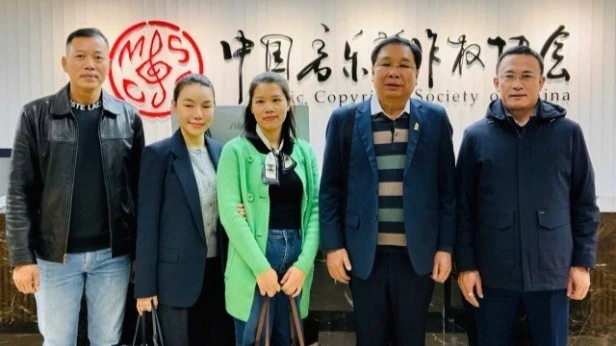In an age when modern entertainment forms increasingly dominate public attention, traditional stages like Cheo have gradually faded from the spotlight — especially among young audiences who often lack accessible ways to understand or connect with this heritage art form. Against this backdrop, a group of Gen Z students has chosen to accompany Cheo, contributing to the dissemination of their forefathers’ artistic heritage.
Creative journey of “Neo Cheo”
“Neo Cheo” is a communication project launched by Gen Z students who aspire to “anchor” the essence of Cheo in modern life. The organising team comprises final-year students from FPT University Hanoi — Le Cao Thien (2003), Do Huong Thao (2003), Do Phuong Linh (2004), Tran Duc Anh (2004), and Do Trung Kien (2001).
In November 2025, the group plans to hold an art exhibition and discussion titled “Chieng Ca Cheo Keo” in Ha Noi. The event will showcase Cheo’s costumes, props, instruments, and artefacts — creatively reimagined through digital projection — inviting Gen Z audiences on a fresh journey to discover the soul of this ancient Vietnamese performing art.
Alongside the exhibition, the discussion “Chieng Ca Cheo Keo” will open conversations on the essence and spirit of Cheo — from its origins and preservation efforts by veteran artists to the innovative ways young creators are bringing it closer to the public through modern forms of expression.
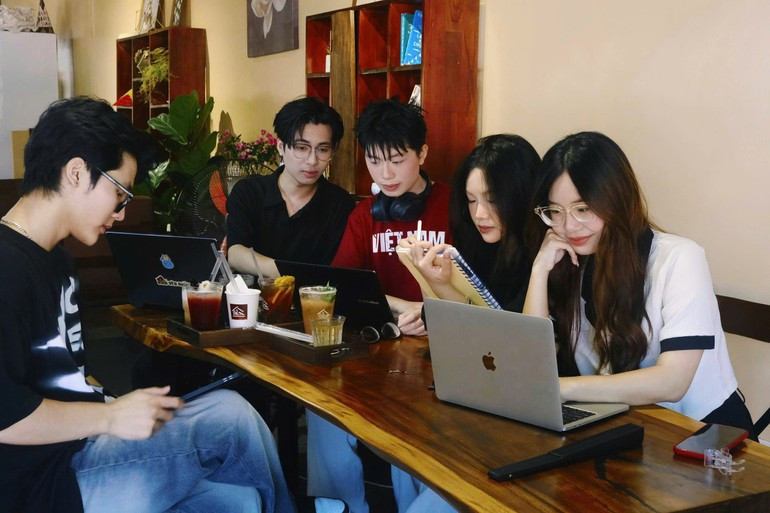
The project will also feature an animated music video titled “Duyen Phan Phai Chieu” and a creative competition “Neo Nhip Cheo – Dan Nhip Tre” (“Anchoring Cheo’s Rhythm – Weaving the Rhythm of Youth”).
When the young walk hand-in-hand with the art of Cheo
In “Neo Cheo”, each member plays a different role, yet they share the same mission — to make traditional Cheo resonate with today’s youth.
Do Phuong Linh, a member in charge of the project’s design section, shared: The idea for “Neo Cheo” stemmed from our concern that traditional Cheo art is gradually drifting away from young people’s lives. We wanted to create a communication campaign that not only preserves Cheo in memory but also transforms it into a familiar source of inspiration that sparks creativity.
Linh added: “We chose Cheo because it is deeply rooted in Vietnamese daily life — familiar, witty, and full of folk wisdom. It is both rustic and refined, both storytelling and dialogue with the present.”
Through “Neo Cheo”, these young creators hope to build new “bridges” — ones that allow Cheo to step beyond the traditional stage and enter the digital space, transforming collective memory into personal experience and linking preservation with responsible innovation.
The team conducted an online survey of over 300 students and young people in Ha Noi and several northern provinces. Results showed that 97% had heard of Cheo, but most had only a superficial understanding and struggled to distinguish it from Tuong (classical opera) or Cai luong (reformed theatre). Still, 92% viewed Cheo as an essential part of Vietnamese culture and expressed willingness to learn more if presented in engaging, relatable ways.
This demonstrates that Cheo still holds a special place in young people’s hearts — the gap lies not in interest, but in approach.
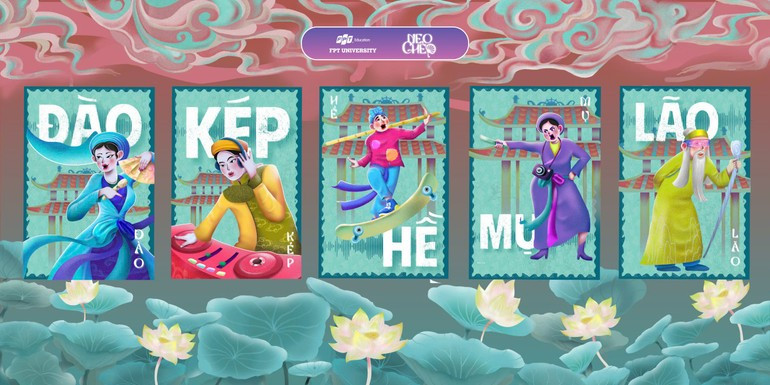
Tran Duc Anh, head of content for the project, explained: “We target Gen Z not to exclude other generations, but because we see in them the mission and potential to inherit and carry forward the nation’s cultural legacy.”
Dr. Vu Viet Nga, Lecturer at the Faculty of Communication Technology, FPT University Hanoi, who mentors the “Neo Cheo” project, remarked: “Many people think Gen Z is disconnected from tradition, but recent years have shown a surge of creative projects rooted in folk art, passionately developed by young people. The problem isn’t indifference, but outdated approaches. Watching the ‘Neo Cheo’ team study melodies, costumes, and interview artists, I realised they truly want to walk alongside Viet Nam’s traditional arts. With the creativity and energy of Gen Z, Cheo will become fertile ground for young people to freely express themselves and breathe new life into this cultural heritage.”
A message of connection
“Neo Cheo” aspires to harmoniously blend preservation and renewal, keeping traditional values intact while making them appealing to younger audiences.
Tran Duc Anh shared: “Neo Cheo believes that renewing the way of approach will serve as a bridge bringing young people back to the core values of traditional culture. The very essence that creates the charm and beauty of Cheo — from its melodies to its stories — will be preserved in its entirety. Alongside preservation, Neo Cheo also seeks to innovate communication methods, using relatable language and expressions that resonate with the younger generation, so they can engage with traditional art naturally and without feeling distant.”
Le Cao Thien, head of the organising committee, added: “To preserve heritage doesn’t mean keeping it locked in a glass case — it means letting it live and breathe with the new generation. When young people see themselves in Cheo — through a melody, a costume, or a creative project — it stops being distant and becomes part of their everyday life.”
“We hope ‘Neo Cheo’ will inspire others to see that traditional art can become a powerful source of creativity for the youth, enabling each person to continue writing the Vietnamese cultural story in their own way.”
“Neo Cheo” and its journey of cultural revival
“Neo Cheo” aims to build multi-dimensional connections between Cheo and Gen Z through technology, emotion, and real-life experiences.
Online, Neo Cheo goes beyond simply sharing knowledge — it aims to ignite creativity and inspiration among Gen Z. Its online content focuses on emotional storytelling, bringing to life the real stories of Cheo artists, from young performers to seasoned masters. Through these narratives, the project seeks to evoke a sense of pride and responsibility in the younger generation to carry forward the nation’s cultural heritage.
Alongside its online initiatives, Neo Cheo also creates vibrant, hands-on experiences that allow young people to engage with and feel the essence of Cheo firsthand. As part of the project, the team plans to host an art exhibition where tradition meets technology, offering audiences an innovative, multi-sensory experience.
Moreover, in the near future, the young organisers intend to launch a creative music project blending traditional Cheo melodies with modern styles — an exciting step toward bringing this centuries-old art form closer to today’s youth.
To realise these goals, the young organising team must work in close harmony with seasoned experts, artists, and established theatres.
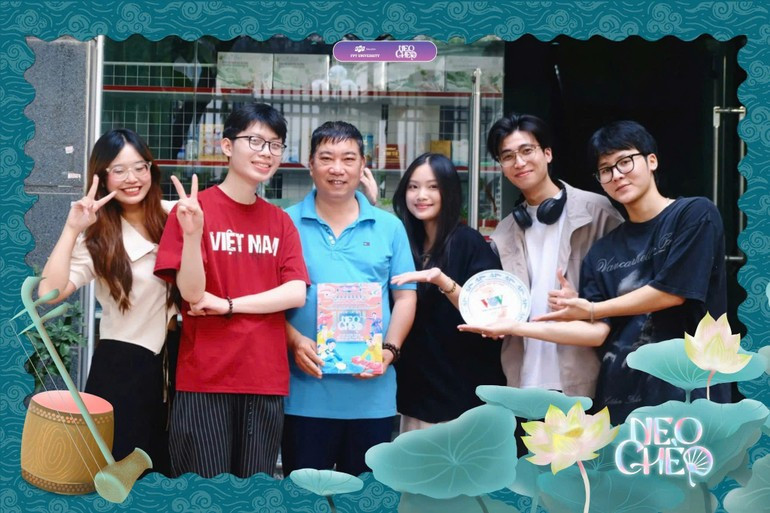
“For us, collaboration with art institutions is not just a form of support — it is the very soul of the project. We’ve realised that when reputable artistic organisations join hands with us, the project not only gains professional strength but also becomes a two-way bridge — one that brings young people closer to artists, while allowing the artists themselves to witness the creativity and energy of Gen Z,” Duc Anh.
These concrete actions show that Gen Z is not stopping at ideas or slogans — they are actively transforming Cheo into a vibrant, living experience that spans both the digital realm and real life. In this space, Gen Z are not only audiences but also creators, breathing new life into traditional art through their own language and expression.
